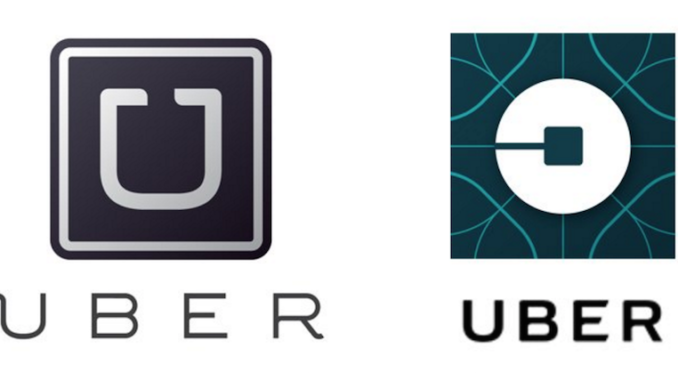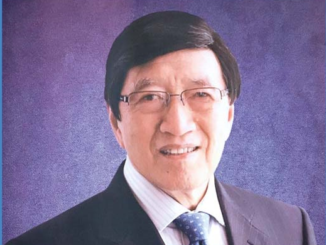
Yves Gonzalez, Head, Public Policy, Uber Philippines
As to the matter of the supply and demand gap, both Uber and Grab currently have a gap on the availability of supply. So it’s not a matter of if you cannot book an Uber, you will just go to Grab.
For example, this morning a lot of people have been texting us that they are unable to book either on both Uber and Grab because of the rain. So at the moment, today, the demand is higher than usual. We are both unable to fulfill the current demand.
28,000 Uber drivers
 As to the difference between the 28,000 we mentioned in the hearing versus the 66,000 we submitted as a list, the 28,000 was basically around the ballpark of the active for the past month, while the list we submitted was every single partner who took at least one trip for the past year. So, of course, that would be a much longer list because there might have been a person who just took one trip but we put it in the list.
As to the difference between the 28,000 we mentioned in the hearing versus the 66,000 we submitted as a list, the 28,000 was basically around the ballpark of the active for the past month, while the list we submitted was every single partner who took at least one trip for the past year. So, of course, that would be a much longer list because there might have been a person who just took one trip but we put it in the list.
As to the 83 complaints that were noted as of 2015 to 2017, I think when you’re doing millions of trips every week, both Uber and Grab, 83 complaints in three years is not very bad at all. And we are able to resolve the other thousands of issues that possibly arose, for example, if it’s a fare dispute, if it’s arrogant, anything, we’re able to resolve it because both Uber and Grab have our support systems in place.
And finally, the most important point is that regulation shapes reality. If the regulation says that cars must be up to three years only upon application, the reality will be you will have more brand new cars on the road versus older cars. In Malaysia, it’s up to seven years, so the average age is three years. If your regulation says that only professional drivers are allowed to drive on ride-sharing, then you will have professional drivers driving on ride-sharing. And that excludes people like me, people like Brian or other people with non-professional drivers licenses who also want to share their existing car.
One million Uber riders
 In the Philippines, over one million Uber riders regularly take Uber rides. This is, of course, over a period of one month. Hindi naman po sila sabay-sabay. Active drivers at any given point in time during the high demand hours, we only have about 7,000 to 10,000. At the most, 10,000 active drivers on the road.
In the Philippines, over one million Uber riders regularly take Uber rides. This is, of course, over a period of one month. Hindi naman po sila sabay-sabay. Active drivers at any given point in time during the high demand hours, we only have about 7,000 to 10,000. At the most, 10,000 active drivers on the road.
It is very much demand responsive, and that over 60% of our drivers drive part-time. So these are people who drive when they are needed the most.
As to solving traffic, more than 40% of Uber trips are now on pool. It’s one of the highest all over the world. This means that instead of three individual cars, it’s just one car. And that over 40% of our riders surveyed last year said that they have started using their private car less. And this is the goal of Uber. We are taking on private car usage.
As to efficiency, Uber cars are on a trip about 80% to 95% of the time. That means they are not wasting hours on the road just looking for passengers. And currently, we’re unable to supply rides to 20% to 30% of our hourly riders, which means—over the past few months, around 20,000 to 100,000 people weekly are unable to book a ride. These are people who tried to open the app, book a ride and sasabihin namin, “Sorry, no cars available.”
60% of our drivers are part-time, and this is the unique feature of ride-sharing, it is demand responsive. When you need supply, supply can go online to provide rides on the road. No other transportation mode has a demand responsive model, and that is very important.
Driver churn
 As to driver churn, it’s part of the nature of ride-sharing not only in the Philippines, but all over the world that a lot of drivers try out ride-sharing, try it for two hours, try it for one week and then realize, “It’s not for me.” And so driver churn is a fact of life in ride-sharing both in Uber and in Grab.
As to driver churn, it’s part of the nature of ride-sharing not only in the Philippines, but all over the world that a lot of drivers try out ride-sharing, try it for two hours, try it for one week and then realize, “It’s not for me.” And so driver churn is a fact of life in ride-sharing both in Uber and in Grab.
Our goal in Uber, again, is to replace traditional private car ownership. When you look at EDSA, the biggest cause of traffic is private cars. I was with MMDA for three years monitoring CCTVs and every day the question has always been, “How do we reduce private cars?” Ideas have been number coding, odd-even, two-day number coding. Our idea is, “Let’s give them a viable alternative. A reliable alternative that they will say, I don’t need to bring my private car.”
So with Uber, hopefully, instead of 10 traditional private cars for example, with ride- sharing, five cars. But even with UberPool, we can trim that down to two cars. So the 2.5 million cars in Metro Manila, if we all put them on ridesharing, 700—800,000 would be enough to ferry everyone across Metro Manila. And that is a bigger impact than any number coding, odd–even scheme that can be proposed.
UberPool
 As to UberPool, for example, in the past year of UberPool, because people are taking one car instead of two to three cars, 6.6 million kilometers have been removed from the roads, that’s equivalent to 300,000 plus layers of fuel saved and most importantly, the reduction in carbon emissions.
As to UberPool, for example, in the past year of UberPool, because people are taking one car instead of two to three cars, 6.6 million kilometers have been removed from the roads, that’s equivalent to 300,000 plus layers of fuel saved and most importantly, the reduction in carbon emissions.
No other mode of transportation (can do it). Private car cannot do this because private car is not—you cannot just do on demand ridesharing with current private cars.
So since the suspension of new activations, this is what happened: We have been unable—demand and supply has always been unable to meet.
So if you notice, when there is holiday—so, for example, in the church when it’s Christmas break, when it’s holiday break, when it’s Holy Week, demand and supply both go down. So demand and supply are always intertwined. But what is happening is that demand can no longer, at the moment, never meet supply—supply can never meet the current demand.
So comparing ourselves with our neighbors—so, for example, in the Philippines, our vehicle age limit is three years old at the time of the application; in Singapore, it’s 10 years; in Australia, it’s eight years; in the US, it’s 10 years; in Vietnam, it’s 12 years; in Indonesia, it’s 10 years. So, of course, the average age of cars on those platforms will be much higher than the one and a half that we have in the Philippines.
Only in PH is supply regulated
Only in the Philippines, supply and pricing are aimed to be controlled by the government while our neighbors—Malaysia, Australia, New Zealand, Singapore, all have realized that demand and supply must be able to effective—the market must be trusted to do its work.
As to onboarding cost, for example, the Philippines has one of the highest onboarding costs which means the higher your onboarding cost, the more hours you will have to drive on the platform para masulit mo iyong onboarding cost mo and that includes all the mayor’s permits, all the DTI permits that you will need. So the Philippines is one of the highest in the world and one of the longest in time.
So imagine, if you just wanted to try ridesharing for just—try ko lang one weekend. You will be discouraged. Because when you realized that all the onboarding cost, time and money, is too high.
Only those who are professionally want to do this will go through all of those and that, again, is how regulation shapes reality.
Simplify, please
So our proposal to the LTFRB plain and simple—let’s simplify the process for application for a TNVS franchise. We are not against applying for a TNVS franchise. What we are against is an inefficient process for applying for a TNVS franchise because it has created the backlog that nobody is happy about, not the government, not the TNCs, not the TNVS.
If the LTFRB would allow us to help them in the processing such that we will accept all the documents, we will digitize them, we will put an online platform and the only requirement to the LTFRB would be certificate of accreditation from the TNC.
What does the certificate of accreditation from the TNC mean? It means that we have done our background check. It means we have the documents of this partner. It means that we have done all the requirements so that this certificate of accreditation is the one thing that the LTFRB can say, “Ah, you have passed because your TNC has said you have passed.” And if we failed to do our obligation, then that will be the source of our accountability. Because when we say that this person is qualified, that is our guarantee that this person is qualified.
So we are willing to create online systems with the LTFRB so that they can access all the data that they have been asking for and that it will be more transparent to them. Or ask, for example, “Has TNC already provide support?” So allow us to provide the support.
Meaning to say, don’t have hearings over P100 per dispute; don’t have show cause orders over technical glitches because we already invest in all the support systems and we already have this in place. And then allow the TNC—mandate the TNC to have an additional layer of insurance coverage. So it’s not just the TNVS but also the TNC that can provide that layer of accountability.



